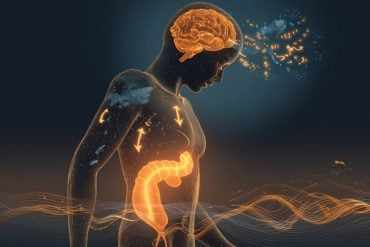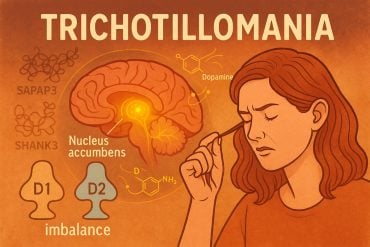Summary: New research shows that older adults may compensate for age-related cognitive decline by enhancing activity in a specific brain region linked to attention—the locus coeruleus (LC). In a brain imaging study, older participants showed stronger LC responses when interpreting ambiguous facial expressions, compared to younger adults.
This LC activity was most pronounced in older individuals with high emotional resilience and well-being. The findings suggest that the aging brain may reorganize neural pathways to support complex social processing and mental health.
Key Facts:
- LC Activation: Older adults show more locus coeruleus activity during difficult facial expression tasks.
- Adaptive Pathway: A stronger LC-to-cortex connection is linked to better emotional resilience in aging.
- Mental Health Link: Targeting this brain circuit may help support cognition and emotional regulation.
Source: SfN
Because aging weakens cognitive skills, older people can struggle to read difficult social cues.
A brain region involved in attention and arousal—the locus coeruleus (LC)—helps with complex tasks, and its connections to the cortex may adapt as humans age to support cognition.

To shed more light on this, Maryam Ziaei, from the Norwegian University of Science and Technology, and colleagues explored whether the LC and its cortical pathways change over time to help process faces that are difficult to read.
In their new Journal of Neuroscience paper, the researchers imaged the brains of young (21 to 29 years old) and old (67 to 75 years old) adults as they looked at faces. Older adults had more LC activity than younger adults when facial expressions were harder to understand.
More specifically, a projection from the LC to a cortical brain area involved in decision making and executive function was stronger in older people. This pathway was the strongest in older adults with better mental well-being and emotional resilience.
Thus, according to the authors, this LC neural pathway may adapt over time to support difficult social tasks, like reading ambiguous facial expressions. This supportive role may be due to the contributions of this pathway to mental and emotional health. Says Ziaei,
“It may be possible to promote emotional and mental regulation by targeting this pathway. This could help older people facing cognitive decline or even younger people with conditions like anxiety or depression better deal with social processing.”
About this aging and social neuroscience research news
Author: SfN Media
Source: SfN
Contact: SfN Media – SfN
Image: The image is credited to Neuroscience News
Original Research: Closed access.
“Age-Related Increase in Locus Coeruleus Activity and Connectivity with Prefrontal Cortex during Ambiguity Processing” by Maryam Ziaei et al. Journal of Neuroscience
Abstract
Age-Related Increase in Locus Coeruleus Activity and Connectivity with Prefrontal Cortex during Ambiguity Processing
Interpreting ambiguous environmental cues, like facial expressions, becomes increasingly challenging with age, especially as cognitive resources decline.
Managing these challenges requires adaptive neural mechanisms that are essential for maintaining mental well-being.
The locus coeruleus (LC), the brain’s main norepinephrine source, regulates attention, arousal, and stress response.
With extensive cortical connections, the LC supports adapting to cognitive demands and resolving conflicting cues from environment, particularly in later life.
Previous research suggests that LC interacts with the prefrontal cortex (PFC) during high-conflict tasks.
However, whether LC activity and its connectivity with the PFC support emotional ambiguity processing and contributes to emotional well-being in healthy aging remains unclear.
To address this gap, we used 7T-MRI to examine LC function in 75 younger (25.8 ± 4.02years, 35females) and 69 older adults (71.3 ± 4.1 years, 35females) during facial-emotion-recognition task morphed with varying ambiguity: anchor (unambiguous happy or fearful), intermediate-ambiguity (30%happy-70%fearful and 40%happy-60%fearful expressions), and absolute-ambiguity (50%happy-fearful).
Behaviorally, participants had longer response times and lower confidence during the absolute-ambiguity condition, while older adults perceived ambiguous faces as happy more frequently than younger adults.
Neuroimaging results revealed older adults exhibited greater LC activity and enhanced connectivity with dorsolateral PFC (dlPFC) during absolute-ambiguity compared to younger adults.
This heightened connectivity in older adults was linked to better task-independent self-reported mental well-being questionnaires and greater emotional resilience scores derived from principal component analysis.
Overall, these findings suggest that greater LC activity supports managing cognitively demanding tasks, while enhanced LC-dlPFC connectivity promotes emotional well-being, highlighting this neural pathway’s role in healthy aging.






